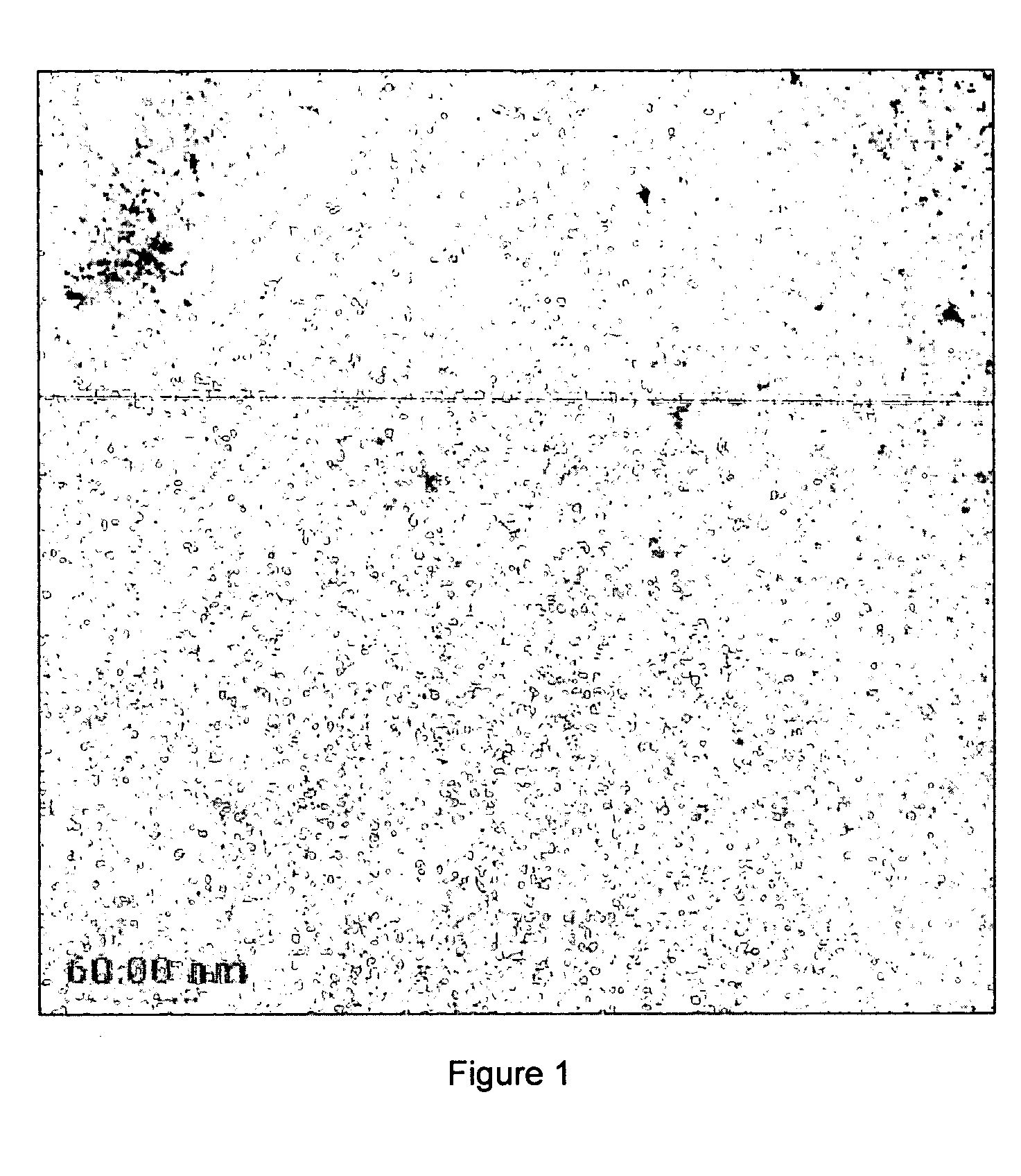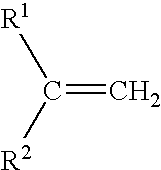Reversible polymer/metal nano-composites and method for manufacturing same
a technology of metal nano-composites and polymerization, applied in the field of polymer nanoparticles, can solve the problems of difficult formation of nano-scale metal composites, and achieve the effect of reducing the difficulty of manufacturing
- Summary
- Abstract
- Description
- Claims
- Application Information
AI Technical Summary
Problems solved by technology
Method used
Image
Examples
example 1
Preparation of Alkylmaleimide Copolymers
[0032] A N2 purged Brabender mixer (˜310 g capacity) equipped with Banbury blades was set to 10 rpm and 30° C. The mixer was then charged with 120 g of poly(maleimide-alt-isobutylene) (Kuraray, commercial name IM-10, Mn=350 K) and 99.4 g of octyl amine (Aldrich, 99% purity). The mixture was agitated in the mixer for 10 minutes and then heated up at a rate about 10° C. / min to 210° C. Once the temperature reached 125° C., agitation was stopped. After reaching a temperature of 210° C., the heating element was set to the isothermal condition. The agitation was then started and increased from 0 to 90 rpm at a rate of 10 rpm / min. Once the agitation speed reached 90 rpm, the temperature was set to 190° C. The mixing was continued isothermally for an additional 90 minutes, the heating element was then turned off and the polymer was allowed to cool down at a rate ˜4° C. / min. The final product was removed from the mixer at 160° C.
example 2
[0033] The experiment and the procedure of example 1 were repeated, except for a minor change of the chemicals used. The mixer was charged with 100 g of poly(maleimide-alt-isobutylene) (Kuraray, commercial name IM-10, Mn=350 K) and 118.8 g of dodecyl amine (Aldrich, 95% purity).
example 3
[0034] A nitrogen purged Brabender mixer (˜310 g capacity) equipped with Banbury blades was set to 20 rpm and 60° C. The mixer was charged with 85 g of poly(maleimide-alt-isobutylene) (Kuraray, commercial name IM-10, Mn=350 K) and 146.8 g of octadecyl amine (Aldrich, 99% purity). The mixture was agitated in the mixer for 10 minutes and then heated up at a rate about 10° C. / min to 200° C. Once the temperature reached 135° C., agitation was stopped. When the temperature reached 200° C., the heating element was set to the isothermal condition. The agitation was then started and increased from 0 to 120 rpm at a rate of 10 rpm / min. The mixing was continued isothermally for additional 160 minutes, the heating element was then turned off and the polymer was allowed to cool down at a rate ˜4° C. / min. The final product was removed from the mixer at 160° C.
[0035] IR characteristic absorption peaks are 1701, 1770, 2855, 2926 cm−1. No trace of maleic anhydride absorption peaks (i.e., at 1779 a...
PUM
| Property | Measurement | Unit |
|---|---|---|
| mean average diameter | aaaaa | aaaaa |
| diameter | aaaaa | aaaaa |
| diameter | aaaaa | aaaaa |
Abstract
Description
Claims
Application Information
 Login to View More
Login to View More - R&D
- Intellectual Property
- Life Sciences
- Materials
- Tech Scout
- Unparalleled Data Quality
- Higher Quality Content
- 60% Fewer Hallucinations
Browse by: Latest US Patents, China's latest patents, Technical Efficacy Thesaurus, Application Domain, Technology Topic, Popular Technical Reports.
© 2025 PatSnap. All rights reserved.Legal|Privacy policy|Modern Slavery Act Transparency Statement|Sitemap|About US| Contact US: help@patsnap.com



